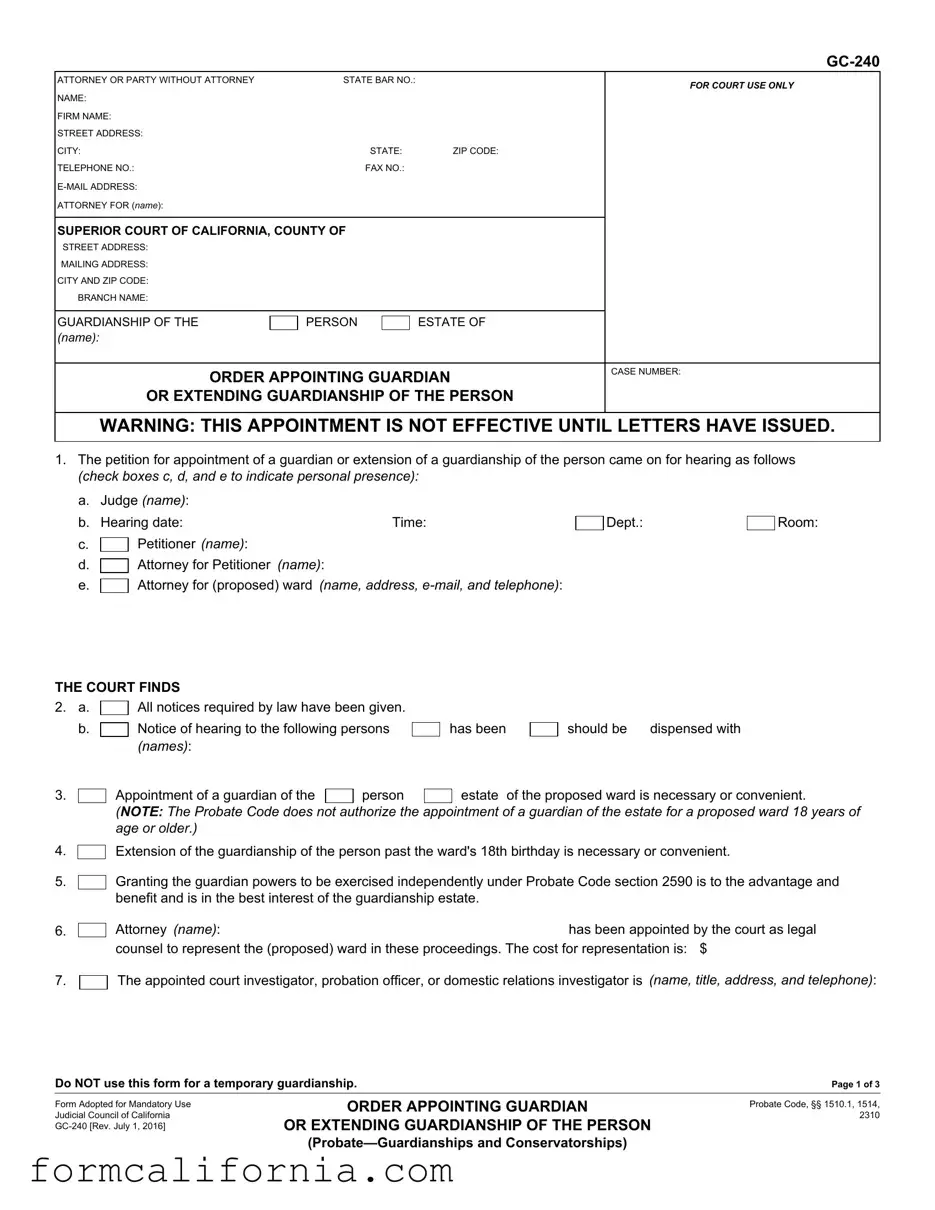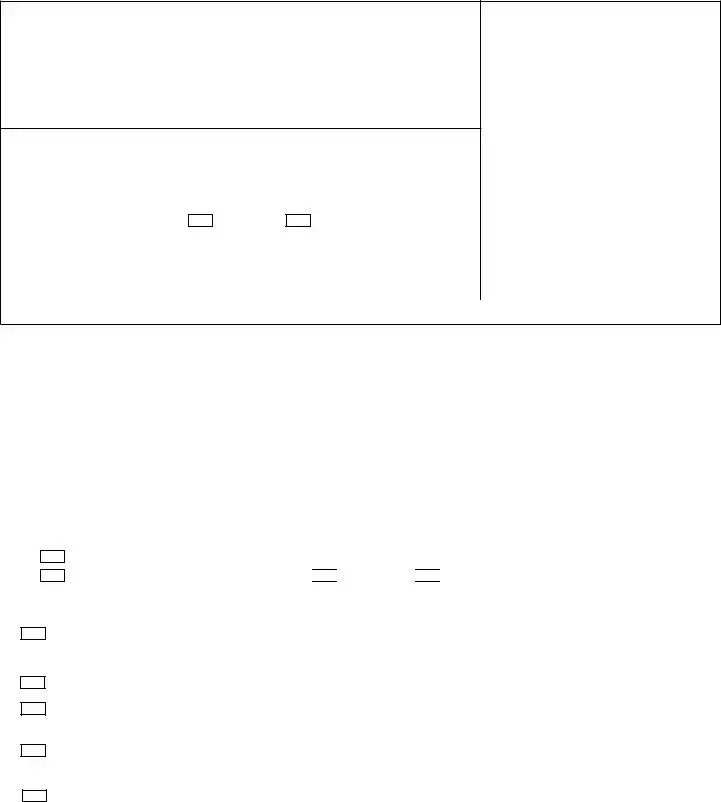The California GC-240 form, which is utilized for appointing or extending guardianship of the person, has similarities to several other legal documents focusing on guardianship and conservatorship matters. One such document is the GC-210, Petition for Appointment of Guardian of the Person. This form initiates the process that the GC-240 concludes, serving as the formal request to the court for the establishment of a guardianship. Both forms play pivotal roles in the legal procedure of assigning a guardian, with the GC-210 marking the beginning of the process and the GC-240 finalizing the guardianship appointment.
Another related document is the GC-250, Letters of Guardianship, which serves as the official court document granting the guardian the authority to act on behalf of the ward. The GC-240 form, through its issuance of orders and letters upon qualification, directly leads to the generation of the GC-250 document. The Letters of Guardianship are essential for guardians to fulfill their duties, embodying the legal empowerment provided by the court's decision documented in the GC-240 form.
The GC-310, Petition for Appointment of Conservator, is similarly structured to the GC-240 but applies to conservatorship cases. While the GC-240 deals with guardianship, primarily targeting minors or adults unable to make decisions for themselves, the GC-310 is focused on appointing conservators for adults who are incapacitated. Both documents require detailed information about the individual in need of care and the proposed guardian or conservator, showcasing the court's role in ensuring the protection of vulnerable parties.
The GC-350, Letters of Conservatorship, parallels the GC-250 in the context of conservatorship. It constitutes the formal document that allows the conservator to act on behalf of the conservatee. The completion and issuance of these letters are contingent upon the court's decision, similar to the process outlined in the GC-240 form. Both the GC-350 and the GC-240/250 sequence emphasize the legal authorization granted to individuals to manage the affairs of those who cannot do so themselves.
The GC-248, Notice of Hearing – Guardianship or Conservatorship, plays a complementary role to the GC-240. It serves to inform interested parties about the time and place of the hearing regarding the guardianship. The GC-240 form, referencing the hearing and its outcomes, cannot proceed without the proper issuance and acknowledgment of notices like those facilitated by the GC-248, ensuring all parties have an opportunity to participate in the process.
The Judicial Council Form GC-305, Confidential Guardian Screening Form, is part of the guardianship application process, requiring detailed background information from the prospective guardian. Although the GC-305 is more personal in nature, focusing on the suitability and background of the guardian, its completion is a step toward the finalization of appointments formalized by the GC-240. Together, they ensure that only qualified individuals are appointed as guardians, protecting the welfare of the wards.
Form GC-140, Order Appointing Temporary Guardian, serves a similar purpose to the GC-240 but in a more urgent context. It authorizes temporary guardianship to address immediate needs before a permanent guardianship can be established. While the GC-240 often concludes a longer, more deliberative process, the GC-140 addresses immediate concerns, illustrating the court’s capacity to provide swift protective measures when necessary.
The GC-400, Petition for Appointment of Probate Conservator, is akin to the GC-310 but more specific to probate cases. It mirrors the procedural requirements of guardianship outlined in the GC-240, adapted for probate conservatorship. Both forms reflect the legal framework's adaptability to different circumstances requiring the appointment of a guardian or conservator to manage personal, financial, or medical affairs.
Lastly, the GC-130, Appointment of Guardian ad Litem – Civil, is used in civil proceedings to appoint an individual to act on behalf of a minor or an incapacitated person during litigation. Although the context differs, with the GC-130 being more litigation-centered, both it and the GC-240 embody the judicial system's role in advocating for and protecting the interests of those unable to protect themselves.
Together, these documents represent a comprehensive legal structure designed to safeguard individuals who cannot make decisions on their own, whether due to age, health, or circumstance. The careful coordination and interrelation among these forms reflect the court’s commitment to oversight and welfare in guardian and conservator appointments.



 has been
has been 
 should be dispensed with
should be dispensed with 

 (name)
(name)
 Notice of hearing to the persons named in item 2b is dispensed with.
Notice of hearing to the persons named in item 2b is dispensed with.
 Bond is not required.
Bond is not required. Bond is fixed at: $
Bond is fixed at: $ Deposits of: $
Deposits of: $